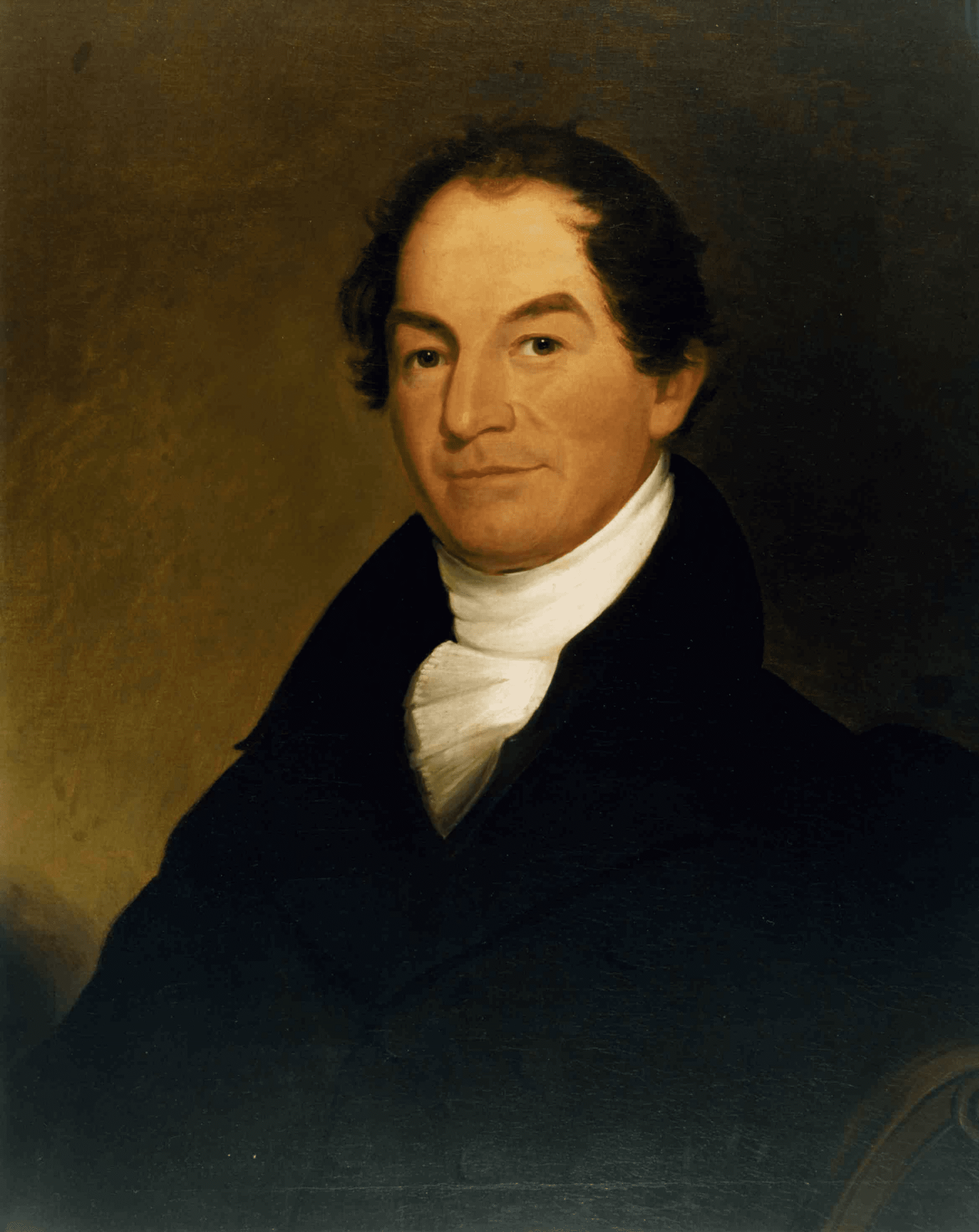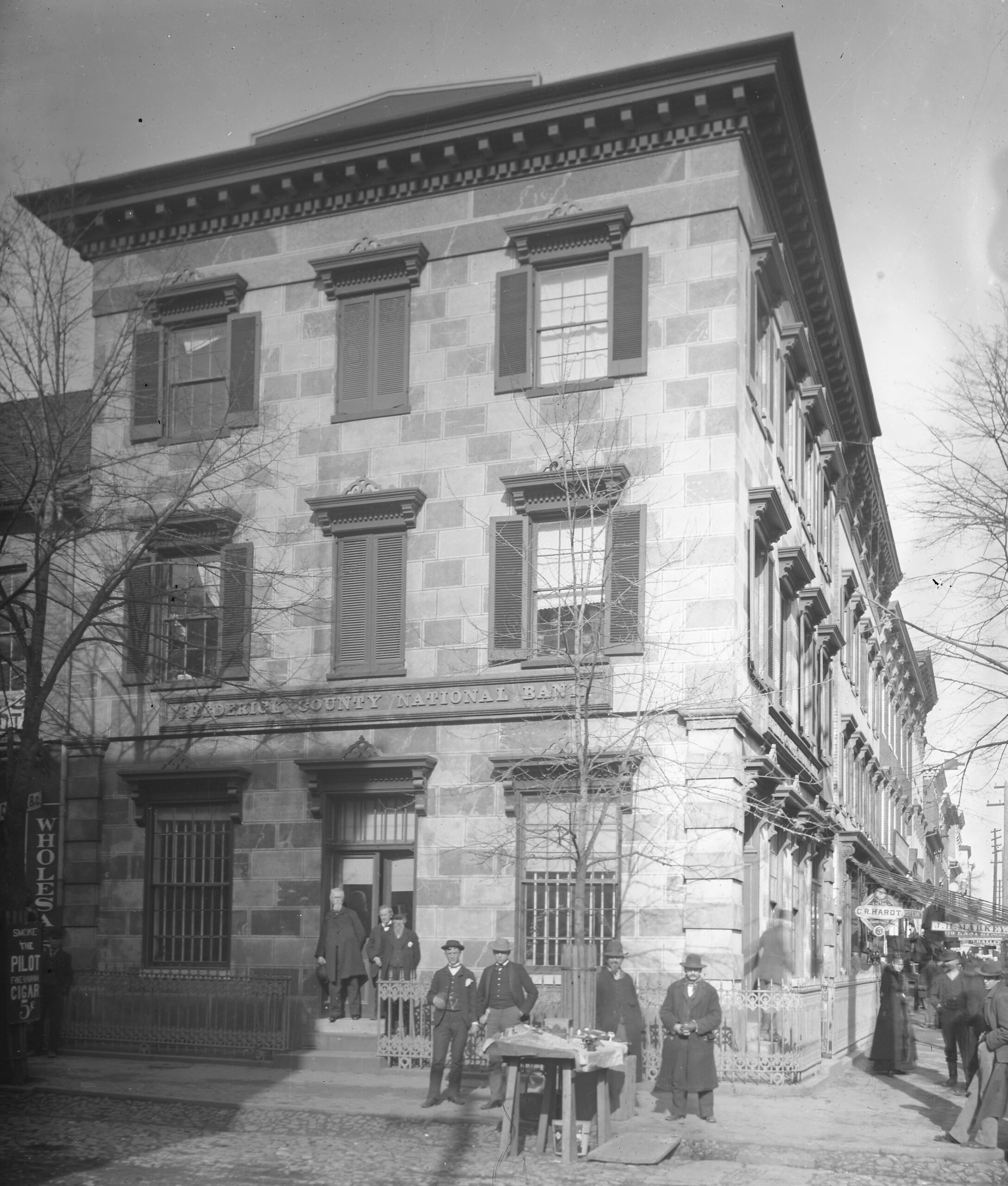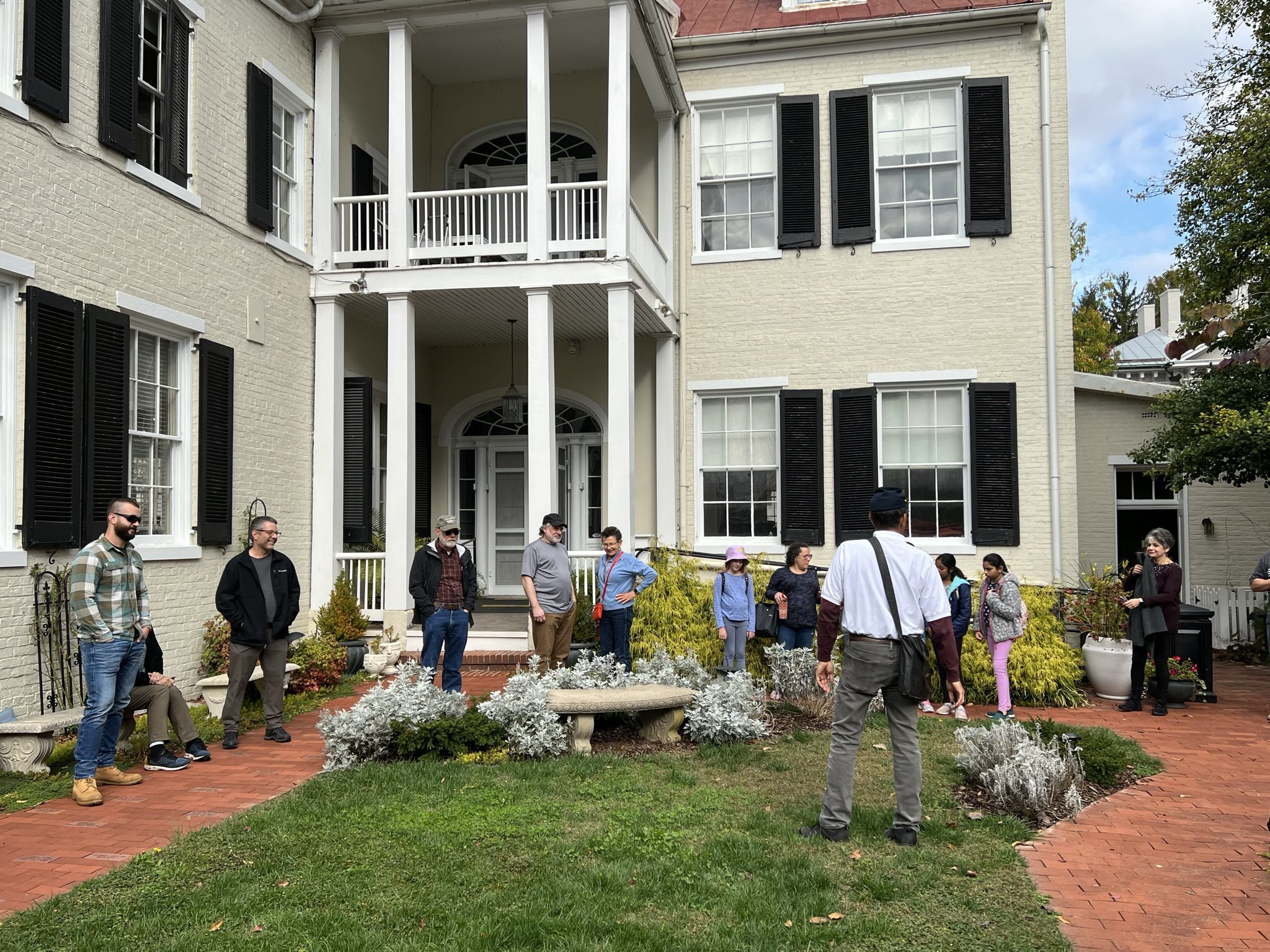
Welcome to 24 East Church Street
Since 1959, Heritage Frederick has called 24 East Church Street its home. Our historic headquarters is the location of the Museum of Frederick County History, Heritage Frederick’s extensive Archives and Research Center, and the administrative offices for our staff. The building is a well-preserved example of Federal architecture and was constructed between 1824 and 1826.
The builder of our historic house was Dr. John Baltzell (1775-1854). Born in Frederick, Dr. Baltzell trained under Dr. Philip Thomas and became a respected physician. Early in his medical career, Dr. Baltzell joined other physicians in Frederick to confront a fever epidemic which swept the county in 1804. Dr. Baltzell served in the War of 1812 as a surgeon attached to the 16th Regiment of the Maryland Militia.
On December 24, 1821, Dr. Baltzell married Ruth Ridgely (1800-1867), the daughter of the Hon. Charles Ridgely, a member of the Maryland General Assembly and Speaker of the House of Delegates. Together, they had eleven children, eight of whom lived to adulthood.
The Baltzell household at 24 East Church Street included at times up to eight enslaved people. Among them was a man named Michael Hill who was manumitted by Dr. Baltzell in 1850. He was thirty-five years old when he was given his freedom. Hester Diggs was enslaved in the Baltzell household until 1854 when she was manumitted by Ruth Baltzell. Hester married John Diggs and they raised three children among Frederick’s significant free Black community.

Dr. John Baltzell

Frederick County National Bank, circa 1880
Dr. John Baltzell died in 1854 and 24 East Church Street was sold to Col. Alexander Baird Hanson (1790-1868), a native of Kent County who descended from a line of planters who accumulated wealth and political power through the Eastern Shore’s plantation economy. Hanson led the Kent County militia, known as the “Silk Stocking Company,” in the War of 1812. He married Susan Wilson Black on December 22, 1829 and the couple moved to Frederick in the early-1830s. Hanson established a grocery and liquor wholesale business near the Baltimore and Ohio Railroad freight depot on South Carroll Street.
Hanson was active in business and civic pursuits in Frederick. He invested his own money to install cast iron waterpipes to the city’s industrial corridor along South Carroll Street. He was a founding trustee of the Frederick Female Seminary (predecessor of today’s Hood College). From 1850 until his death in 1868, Hanson served as president of the Frederick County National Bank, which was located on the Square Corner at the center of Frederick. In July 1864, Hanson’s bank was one of five in the city that combined assets to pay the $200,000 ransom laid on Frederick by Confederate General Jubal Early. Hanson and his son, George Aldolphus, were both avowed Confederate sympathizers.

John Henry Loats (left) and Caroline “Callie” Ellen Sifford Loats (right)
Two years after the death of Alexander Baird Hanson, his son George Adolphus Hanson sold the 24 East Church Street property to John Henry Loats (1814-1879). Born in Baltimore County, Loats learned the trade of tanning from George Algire. In 1848, he moved to Frederick and purchased the tannery of Casper Qynn along Carroll Creek. Loats first wife, Leah Ann Chilcoat, gave birth to a son named Oscar who died at the age of seven months on June 28, 1844. Leah died barely two months later on August 20, 1844. Loats married a second time to Caroline Ellen Sifford in 1850, but the couple did not have any children.
John Loats invested the profits of his tannery in several business and civic pursuits. He founded the Frederick and Pennsylvania Line Railroad in 1867 and served as the company’s first president. He was a founding director of the Mount Olivet Cemetery and an active member of Evangelical Lutheran Church where he served on the building committee that oversaw the construction of the present sanctuary with its twin spires, part of Frederick’s famed Clustered Spires, in 1854.
The will of John Loats made provisions that his sister-in-law, Anna Josephine Sifford, inherit his house at 24 East Church Street, which was to remain hers as long as she remained single. She lived in the house until 1881 when she married Aubrey Pearre and moved to Baltimore. Afterwards, another provision of John Loats’ will opened the next chapter in the history of 24 East Church Street.

John Loats left an endowment to be administered by a board of trustees for the care of orphaned girls. After Anne Josephine Sifford Pearre moved out of the house at 24 East Church Street, the trustees initiated the organization and on June 8, 1882, the first three girls were admitted to the Loats Female Orphan Asylum. The name was later changed to the Loats Female Orphan Home and it remained in operation until 1956, providing a home, education, and religious instruction to 103 girls.
The orphan home was managed by a superintendent and a matron. Maud Davis was one of the longest serving matrons, overseeing the upbringing of the girls at Loats Female Orphan Home from 1936 until 1948, and then serving as superintendent until the home closed in 1956. The matrons assigned chores, taught the girls etiquette, and saw to their medical needs. The girls were taught to make their own clothing and the orphan home provided their shoes. Once they were of age, the girls attended public school. When they turned 18, the girls were transitioned out of the orphanage and given $200.00 to help establish themselves in their adulthood. Girls who lived at the Loat’s Home remembered the orphanage as a good place to grow up where they felt part of a close-knit family.
In 1959, the Historical Society of Frederick County (now known as Heritage Frederick) acquired 24 East Church Street from the trustees of the Loats Orphan Home. Founded in 1892, the Society housed its collections at the Steiner House on West Patrick Street from 1945 until removing to the 24 East Church Street property. Today, Heritage Frederick preserves the beautiful Federal architecture of this building and uses its rooms to exhibit artifacts that educate visitors on the significant history of Frederick County. In the 1990s, the basement was remodeled to house the Research Center and Archives, a vital resource for genealogical and historical research utilized by hundreds of visitors each year.

